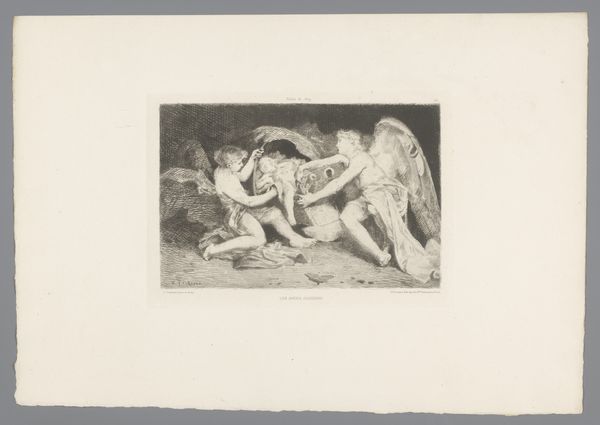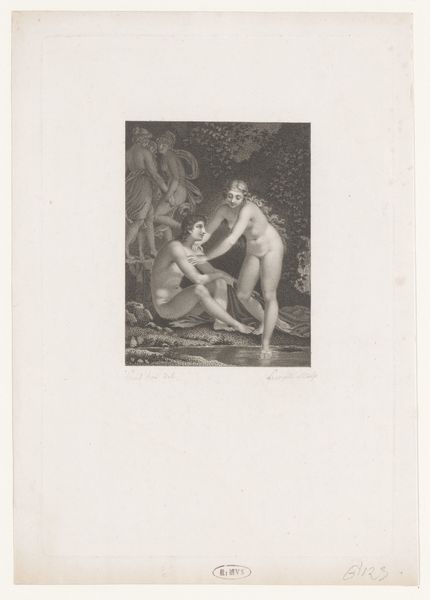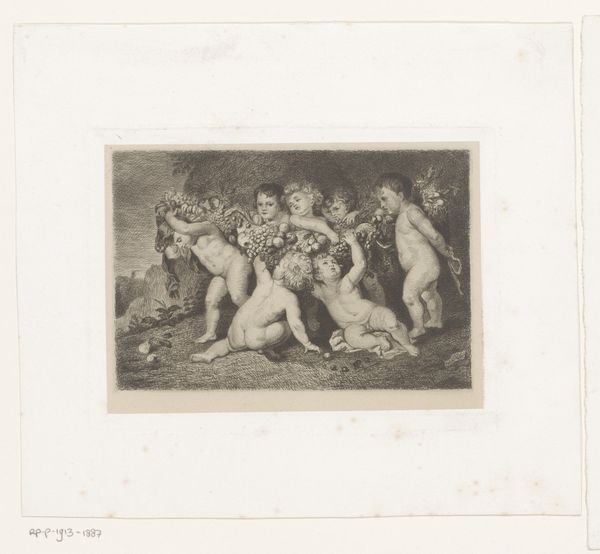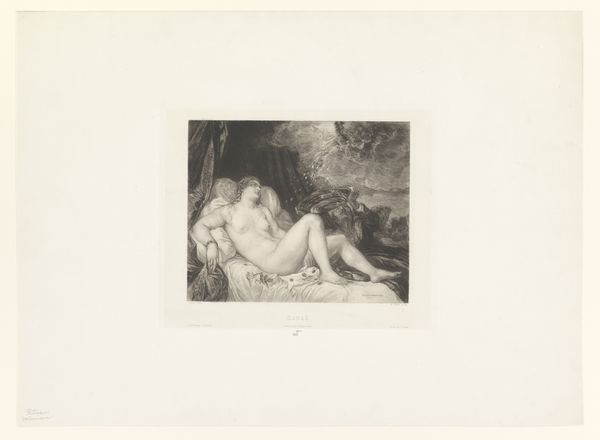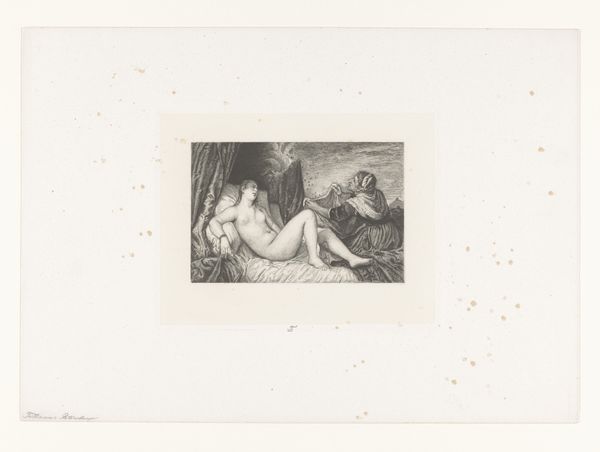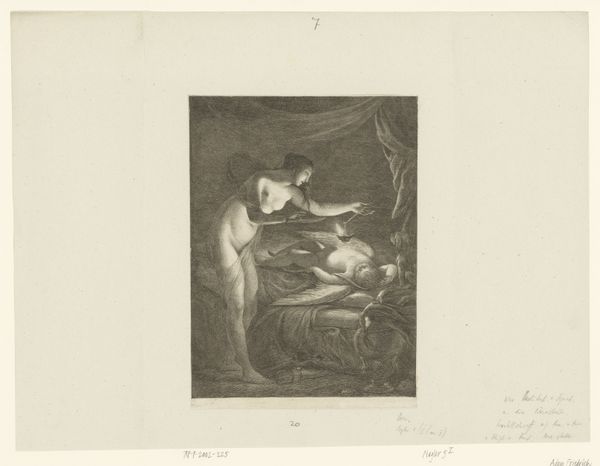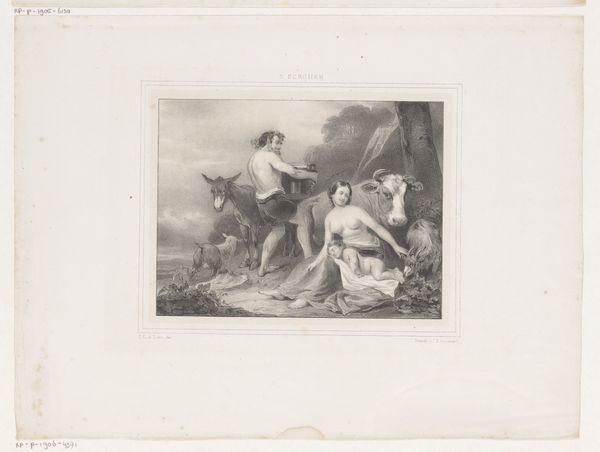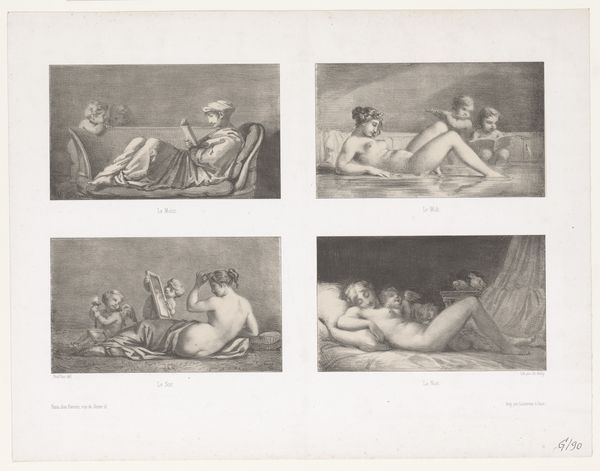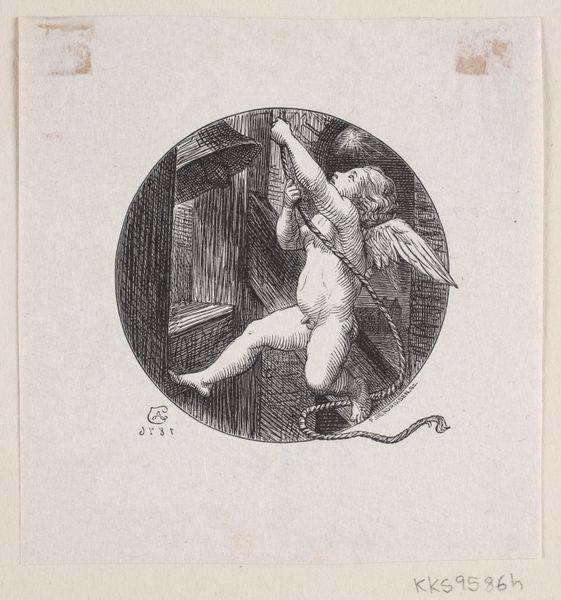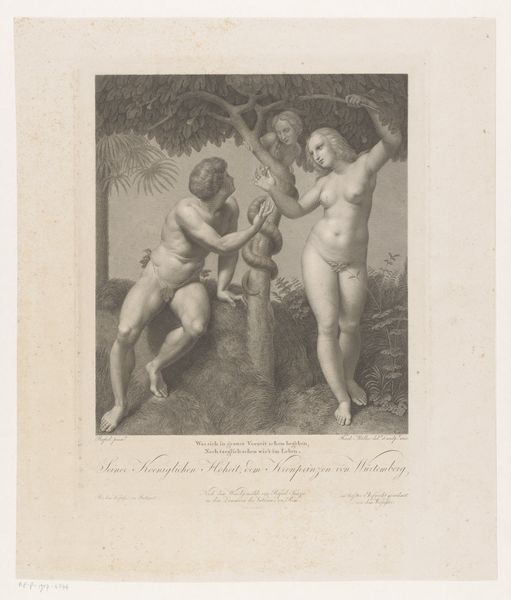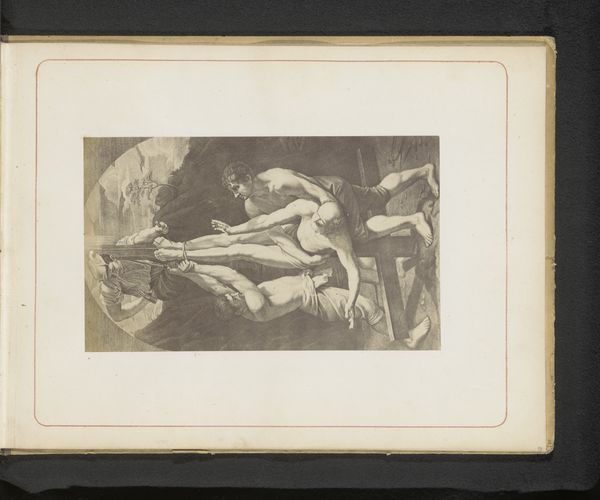
Dimensions: height 260 mm, width 350 mm
Copyright: Rijks Museum: Open Domain
Curator: We’re looking at “Engel en man,” or "Angel and Man," an engraving by Johann Wilhelm Friedrich Kachel, likely created between 1847 and 1863. It’s part of the Rijksmuseum's collection. Editor: Whoa. My first thought? Angsty vibes! It feels like a rock opera in grayscale. Like these two figures, this sort of weary looking dude and an angel who is very alert and powerful, just crashed their spaceship in my feelings. Curator: Indeed. Its composition aligns with Romanticism. This artistic movement was profoundly influenced by the societal shifts brought on by the Enlightenment and the rise of industrialization. Romanticism gravitated toward emotion, spirituality, and individualism, exploring the complexities of human experience. Editor: I'm loving how Kachel's rendering muscles here. Almost feels like those Baroque painters. But something about the faces reads… modern? Conflicted? The nude figures too, in contrast to that dark, ambiguous background creates real drama. I'd wager Kachel had some conflicting impulses while crafting this allegory! Curator: The nakedness in romantic era images definitely invites multiple layers of reading depending on who is engaging. There is an important historical element when examining how idealized figures often are in conversation or contestation with social structures, especially on race and gender norms. In this historical moment it is worth pausing and considering. Editor: Ooh! Is the angel a comment on earthly struggles? Almost like that divine resignation to worldly burdens…that human man appears in total distress...is Kachel critiquing the spiritual leadership’s abandoning everyday folk and human concerns or? Curator: That's a compelling interpretation! We can understand that the allegory serves as a symbolic mirror reflecting anxieties about human alienation from faith, political oppression, and shifting power dynamics of the mid-19th century. The very presence of these two masculine bodies as a stand-in, begs the question of how gender and power work together here to reinforce ideals or possibly resist what is perceived as broken about this world. Editor: I’m completely lost in that smoky, turbulent sky behind them now! Really underlines that feeling of instability. You're right, it isn’t about a godlike force or figure rescuing humankind but just more human confusion, vulnerability…and also that potential for divine understanding… I see it, really appreciate knowing a bit of that backdrop! Curator: Exactly. Engaging with this work invites us to think about the multifaceted narratives within Romanticism itself, urging us to recognize how such historical art objects converse with contemporary themes around the human struggle.
Comments
No comments
Be the first to comment and join the conversation on the ultimate creative platform.
